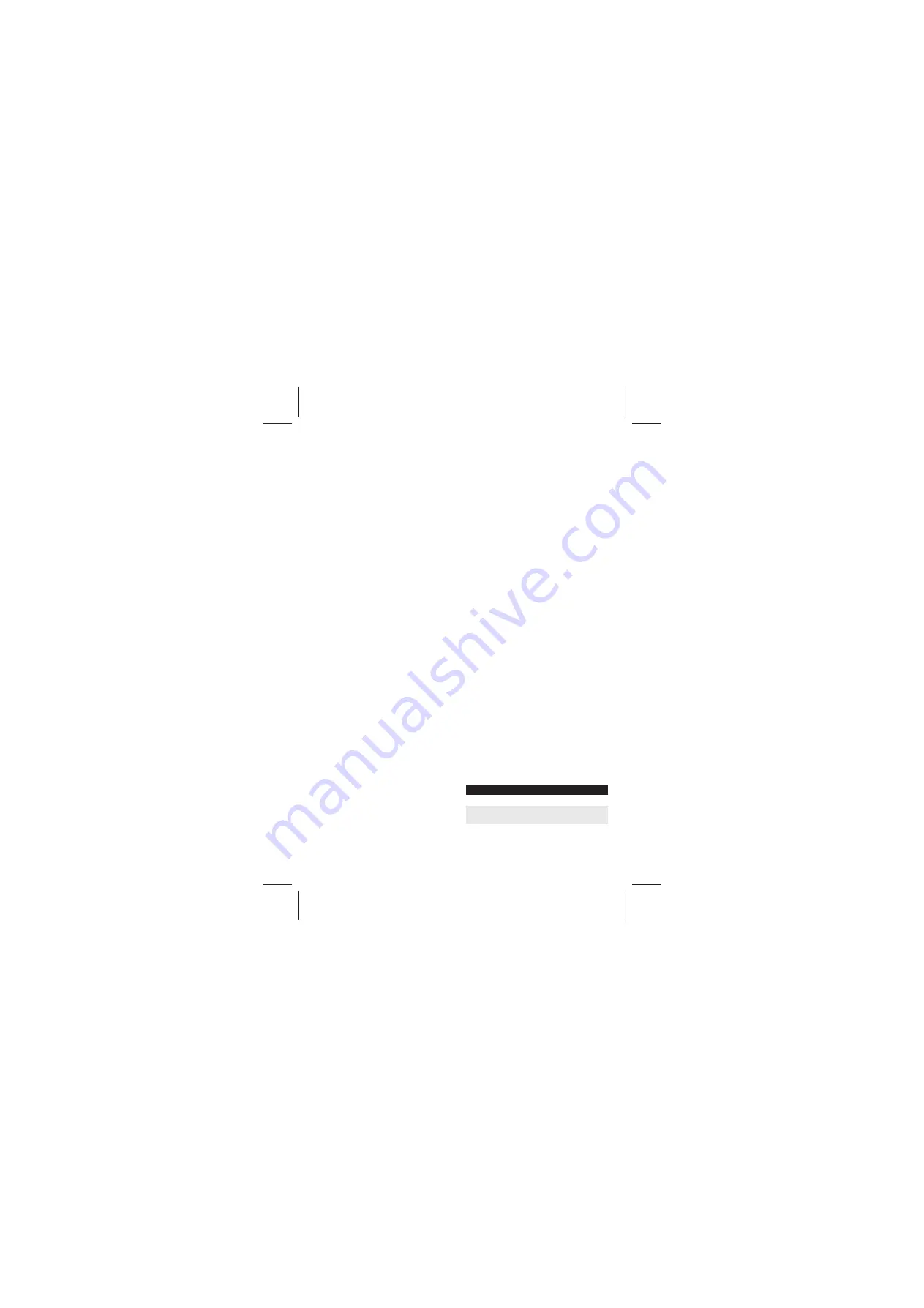
*WEL = Workplace Exposure Limit
3M 3000 Series with ...
Class 1 Gas & Vapour
Filters
P2 Particulate Filters
10 x WEL*
10 x WEL* or 1000 ppm
(whichever is lower)
Assigned Protection Factor
OPERATING INSTRUCTIONS
Cartridge Assembly and Removal
1. Snap the cartridge or
fi
lter holder (3M 3700) into the
inhalation port of the respirator. A snapping sound will
ensure that the cartridge is secure. Make certain that the
cartridge alignment mark is aligned with the respirator.
(See Fig 1 ). 2. To remove cartridge/particulate
fi
lter
retainer, grasp the base of the cartridge and pull with an
upward motion. (See Fig 2).
FITTING INSTRUCTIONS
Fitting Instructions must be followed each time the
product is worn. Select most appropriate size from the 2
sizes of face piece available (S-M / M-L). 1. Place the
respirator over the nose and mouth,
fi
tting it comfortably
on the bridge of the nose, then pull the head harness
over the crown of the head. 2. Take a bottom strap in
each hand, place the straps at the back of the neck and
hook the straps together. 3. Tighten straps by pulling on
ends to achieve a comfortable and secure
fi
t. (See Figs 3
- 5)
FIT CHECK
4.
Perform a Negative Pressure Fit Check.
Place palm of hand over the circular opening of the
cartridge/grill on the front of the particulate
fi
lter holder,
inhale gently. If the face piece collapses slightly a proper
fi
t has been achieved. See Figure 6. If an air leak is
detected, reposition the respirator on the face and / or
re-adjust the tension of the elastic strap to eliminate the
leakage. Repeat the above
fi
t check.
^
If you CANNOT achieve a proper
fi
t DO NOT enter
the hazardous area. See your supervisor. For information
regarding
fi
t testing procedures, please contact 3M.
Users should be
fi
t tested in accordance with national
requirements.
DOFFING
^
Do not remove the face piece, or
fi
lters until you
have vacated the contaminated area.
1. Release the tension on the head straps. 2. Unhook the
bottom straps. 3. Carefully lift face piece off the face and
remove the respirator by lifting up and away from the
face.
NOTE
If the respirator has been used in an area that has
caused it to become contaminated with a substance
requiring special decontamination procedures it
should be placed in a suitable container and sealed
until it can be decontaminated or discarded.
CLEANING AND DISINFECTION
Cleaning is recommended after each use. If the
respirator is to be used for more than one shift it should
be cleaned at the end of each shift and stored between
shifts in the original packaging or a sealed container.
Disassemble by removing the cartridge,
fi
lter, headband,
inhalation valve and the exhalation valve. Use the 3M™
105 Face Seal Cleaner to clean the respirator. Clean
parts (excluding
fi
lters) by immersing in warm cleaning
solution (water temperature not to exceed 50°C), scrub
with soft brush until clean. Add neutral detergent if
necessary. Disinfect respirator by soaking in a solution of
quaternary ammonia disinfectant or sodium hypochlorite
or other disinfectant. Rinse in clean, warm water and air
dry at room temperature in a non-contaminated
atmosphere. If disposal of parts is required this should
be undertaken in accordance with local health and safety
and environmental regulations.
CAUTION
Do not use petrol, chlorinated degreasing
fl
uids (such as
trichloroethylene), organic solvents or abrasive cleaning
agents to clean any part of the equipment. Do not use
cleaners containing lanolin or other oils on these
products. Do not autoclave.
^
Use of unapproved parts
or unauthorised modi
fi
cation could result in danger to
life or health and can invalidate any warranty.
STORAGE AND TRANSPORTATION
These products should be stored in the packaging
provided in dry, clean conditions away from direct
sunlight, sources of high temperature, petrol and solvent
vapours. The original packaging is suitable for
transporting the product throughout the European Union.
When stored as stated, the expected shelf life of the
product is 5 years from date of manufacture. Store in
accordance with manufacturer’s instructions, see
packaging.
]
End of Shelf Life
\
Temperature Range
}
Maximum Relative Humidity
The date of manufacture can be established by
examining the date clock on the inside of the facepiece.
Figure 7. The inner segment will display the year, and
the arrow will point to the month of manufacture in the
outer segment. The example shows 01/09/05 - 30/09/05.
TECHNICAL SPECIFICATION
(Unless otherwise stated in the Reference Lea
fl
et)
Respiratory Protection
EN140 - for use with 3M 3000 Series
fi
lters.
(see Reference Lea
fl
et).
5



























